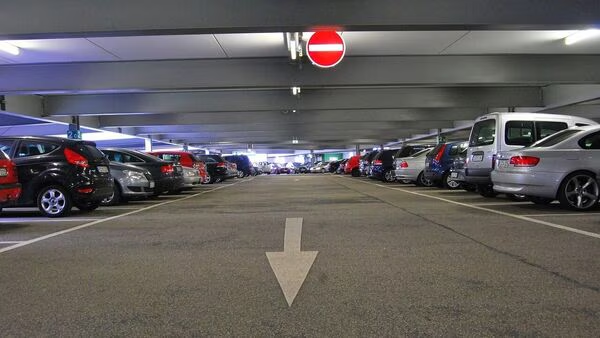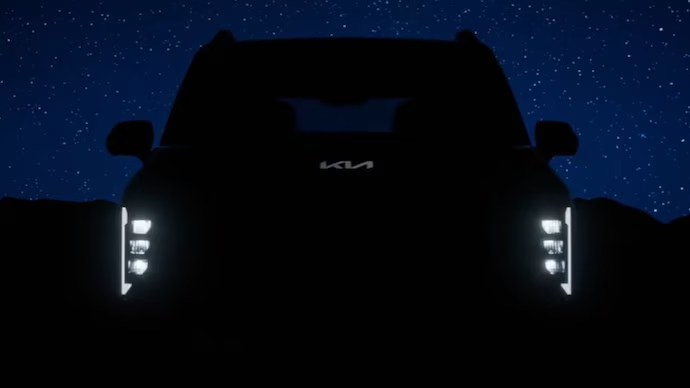India Auto Story 2024 Special Report: Of opportunities, challenges and you

In India, a country characterized by diversity, contrasts, and vast potential, the population reflects a rich tapestry of people, cultures, languages, and preferences unlike any other place. Despite this diversity, mobility serves as a common thread that connects us all. However, individual mobility presents a unique set of circumstances. With personal car ownership rates among the lowest globally and two-wheeler usage slightly higher, the Indian automotive industry presents a distinctive set of opportunities and obstacles. How do you navigate this complex landscape?
India ranks as the third-largest automotive market globally, following closely behind China and the United States. Surpassing Japan in the previous year, statistics reveal that approximately 48% of Indian households possess at least one two-wheeler. However, the intricacies emerge when examining passenger vehicles (PVs). To illustrate, while the United States boasts 580 cars per 1,000 individuals, China stands at 183 cars per 1,000 citizens.
In countries such as Mexico (280) and Brazil (276), even developing ones, the ownership of four-wheelers is relatively higher. Government statistics in India indicate a ratio of 26 cars per 1,000 citizens. If you are perusing this article on the nation’s prominent English automotive platform, it’s likely that there’s at least one car in your family.
What about the general public? This is where the tremendous growth potential resides.
The Indian Automotive Market’s March Forward
Between 2019 and 2023, car sales in India experienced a remarkable 35% growth, marking one of the most significant automotive industry rebounds post the global Covid-19 crisis, according to S&P Mobility. Various factors like overwhelming demand, pent-up consumer interest, semiconductor scarcity, and the YOLO trend were prominent subjects of analysis until the latter part of 2023.
And then something changed. Something not entirely unexpected.
Manufacturers have significantly enhanced their production capabilities, resolved supply-chain issues, and witnessed a return to ‘normalcy’. Unlike the lockdown period where discretionary spending was predominantly for personal mobility needs, post-pandemic reopening at both national and global levels led to a revival of spending patterns resembling those from before the pandemic. Therefore, 2024 was not poised to set new records in sales for manufacturers. According to Santosh Iyer, MD and CEO of Mercedes-Benz India, “This shift was inevitable. The current year’s sales performance is not extraordinary but rather a regression to pre-pandemic norms.” With optimistic indicators and the forthcoming festive season expected to boost the entire Indian automotive market, concerns are minimal.
Partho Banerjee, Head of Marketing and Sales at Maruti Suzuki India Limited, notes that despite a slow start resulting from elections and a harsh heatwave in northern India during the first five months, the luxury car segment where Mercedes competes, as well as the mass-market arena, are both showing similar trends. With the onset of the festival season and favorable monsoon conditions, there is a noticeable positive response from the rural market. Banerjee anticipates a rebound in car sales following the initial subdued growth, considering the strong foundation from which they are operating.
What about considering alternatives with a lesser number of wheels – specifically, two wheels fewer?
Finally, the dance requires two participants!
The world of two-wheelers presents a unique landscape marked by challenges. It has faced significant difficulties that can be traced back even before the Covid-19 pandemic. Key industry players like Bajaj Motorcycles, Scooters India (HMSI), and others have witnessed a consistent increase in both domestic and export sales on a year-on-year basis. Some credit this growth to the improving economic situation in the country, while others highlight the rising demand for mobility solutions in a ‘Work from Office’ environment.
Yogesh Mathur, the Sales and Marketing Director at HMSI, highlights the resilient bounce back in urban regions, overshadowing the stability in rural areas which traditionally form the bedrock of the two-wheeler market. He anticipated a modest growth of 10-12% in the two-wheeler industry this year. However, the current surge stands at 16%, with scooters soaring at 24% and motorcycles at 13%, averaging at 16%. This disparity underscores the urban sector’s flourishing trajectory compared to its rural counterpart.
According to Jefferies, an American financial services company, the Indian two-wheeler sector is projected to surpass the wider industry with a compound annual growth rate (CAGR) of 14 percent. Specifically, electric scooters and bikes are anticipated to remain at the forefront of India’s electric aspirations within the overall two-wheeler sector. Jefferies highlights that the market share of electric two-wheelers in India’s total two-wheeler market has surged from 0.4 percent in FY2021 to seven percent by CY2023, with further growth anticipated – reaching 10 percent by FY2026 and 13 percent by FY2027.
Vision for the Future: India’s Progress in Motion
The Indian automotive market is swiftly aligning with cutting-edge technology trends, particularly in Advanced Driver Assistance Systems (ADAS) becoming prevalent in budget-friendly vehicles. Electric vehicles, once a rarity, are steadily gaining traction on Indian roads. Safety enhancements are fast becoming a standard offering in vehicles spanning various price ranges.
The Indian automotive industry’s role in the country’s economic development goes beyond mere statistics. It is a vital contributor, constituting approximately seven percent of India’s GDP and accounting for about eight percent of its total exports. Prime Minister Narendra Modi has recognized the significance of this sector and emphasized the need for continuous efforts in promoting eco-friendly transportation. During the 64th annual convention of the Society of Indian Automobile Manufacturers in September, he stressed the industry’s responsibility to not only lead by example but also adopt global best practices. Focusing on eco-friendly mobility is a crucial aspect of this endeavor, aiming to align with environmentally conscious practices and standards both domestically and internationally.
What lies ahead on the journey?
India’s road network is rapidly growing, currently ranking as the second longest globally after the US. This expansion is set to enhance the automobile industry in the country. The development of new and upgraded four-lane and two-lane highways is driving the demand, with Union Minister for Road Transport and Highways, Nitin Gadkari, emphasizing its crucial role as the nation’s lifeline. The improved road infrastructure holds the promise of increased automobile demand.
The enhancement of the automotive industry will further enhance job prospects, creating a total of 37 million job positions – both directly and indirectly – currently. Anticipating 50 million electric vehicles (EVs) on the roads by 2030, the expansion of supporting infrastructure is also projected to persist. The public EV charging network increased from 1,800 stations in February 2022 to exceeding 16,000 within the following two years. The ultimate objective is to elevate it to 46,000 by 2030.
The sector’s future will also depend significantly on affordability. With a burgeoning middle-class population favoring the mass-market segment, the impending implementation of the FAME III (Faster Adoption and Manufacturing of Electric Vehicles) policy could boost electric vehicle adoption even further.
In conclusion, the automotive industry presents a favorable outlook despite its rapid developments. Given India’s rich diversity, the demand for mobility solutions is expected to stay strong, driving progress in the sector.
Dive deep into the future of the Indian automotive industry with a focus on upcoming electric vehicles, cars, bikes, and the latest technological advancements shaping the sector.



 English
English Hindi
Hindi Kannada
Kannada Malayalam
Malayalam Tamil
Tamil Telugu
Telugu












